An Honest Brewer’s Insight:
You may have noticed a lack of negative PicoBrew Zymatic reviews online. If you are already an all-grain brewer, you will likely be able to put the pieces together for yourself, but for everyone else, today I’m going to share the real positive and negative sides of the Zymatic.
The Zymatic is a brilliant piece of brew engineering and has some serious benefits, but there are a few limitations to be aware of before you make your purchase. While it is excellent for new all-grain brewers and even for professional breweries doing pilot recipe trials, you will still want to know the lowdown on how it works and whether it is right for you.
Read on for specific details of this great machine, or read a comparison with other similar systems here.
Overview
The PicoBrew Zymatic comes with a hefty price tag, at USD $2,000, making it more expensive than building your own brew house. But is it worth the outlay?
What you will get for your investment is the most advanced automatic, all-in-one system on the home brewers market. It is super compact, highly automated, fast, and very easy. What it lacks is the ability to produce volumes above 2.5 gallons and a ‘human element’ – you are locked into one method of brewing.
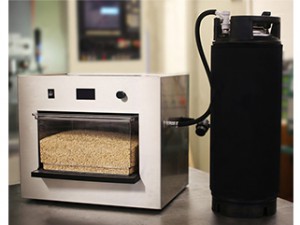 The Features:
The Features:
- Easy ‘set and forget’ brewing
- Four hour brew time (not including setup and cleaning)
- Integrated fermentation system in a modified Cornelius keg
- Recipe building software with predictive batch statistics
- Mobile brew tracking via smartphone or tablet
- Integrated wort cooling system (primitive but functional)
- Hundreds of existing all-grain and partial mash recipes
- Marketplace and community of existing users
Comparison With Other All-in-One Brewing Systems
Just like automatic bread making machines, every all in one brewing appliance has its own shortcomings or design flaws. In the case of the Zymatic, human input has been sacrificed for the sake of automation, cooling and fermentation are primitive for the sake of easy brewing, batch size is severely reduced in order to keep the system compact.
Where the Grainfather and Braumeister can offer a full 20 liter/5 gallon batch, the PicoBrew will only brew 2.5 gallons (9.5 liters). The integrated cooling system involves a bucket of ice water rather than a counter-flow chiller like the Grainfather. Unlike the Braumeister, the Zymatic does not stir grain – it’s a simple infusion and recirculation – although the design does compensate for this, you still have an efficiency loss resulting in more expensive grain.
Because the included fermentation system is a modified Cornelius keg, you have to deal with racking (transferring beer) out of a keg and into a secondary keg using CO2 (even bottling will still require CO2). If you don’t already have a keg system, you are going to need to get one (or at the least, buy a keg charger here for about $20). It’s overly complicated and the major design flaw in an otherwise excellent machine.
These flaws aside, the Zymatic is light years ahead of the curve in automation. You simply prepare your recipe, add the water, grain and hops, press go and walk away until the cooling stage. You then run the cooling cycle and cleaning cycle, clean the large parts, and are finished with your brew until you’re ready to bottle or rack to a serving keg!
Due to the massive saving in time, the PicoBrew is attractive to both new all-grain brewers and professional breweries. While brewing a large batch, brewers can rarely afford to take the time needed for a small volume pilot batch of a new recipe. When they do, there may be several revisions before they are happy enough to brew the recipe on their full-size system. The PicoBrew fills this gap perfectly – set it up and press ‘start’ while you do your day’s brewing, and do it again tomorrow with a slight change to the recipe until you have your next winning beer perfected!
How It Works
The PicoBrew Zymatic is astoundingly simple to operate – although the included instructions may not seem that way (if you are new to brewing you might need to cross-reference a lot of the terminology with online resources). Essentially you just need to set up, come back in a few hours to switch to cooling mode, add an airlock, and then clean up.
This is what everyone loves so much about the Zymatic: it does the mashing process for you with a high degree of accuracy and there is no stress or mess to deal with as a result of running around your brew house like a maniac.
Since this only includes the one modified fermentation keg, you may want to try here for extras.
Pros:
- • Super automatic, super easy, ‘set and forget’ brew day
- Mobile brew tracking from smartphone or tablet
- Suits amateurs and professionals alike
- Saves hours per brew day
- Very clean (even dishwasher friendly!)
- Compact and space efficient
- Includes purpose-built recipe software
- High accuracy
- Integrated cooling and fermentation
- Hundreds of existing recipes for this system
- Strong, supportive community and marketplace (including pro brewers)
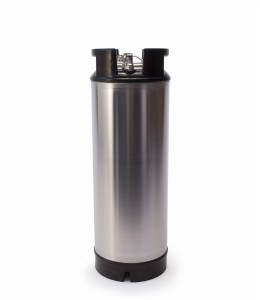 Cons:
Cons:
- ‘Human Element’ removed – severely limited range of brewing methods
- Requires internet connection to access recipes
- Ferments in a keg – tricky to rack
- Requires CO2 system or other system to rack to secondary
- Limited to 2.5 gallon batch size
- Limited grain capacity (therefore a limited beer strength)
- Maximum of four hop additions (plus dry hop; should be plenty for most recipes)
- Instructions may be confusing for new brewers
I love it for: Allowing me to be able to automatically and easily trial variations on a pilot recipe while I focus on my larger batches.
I hate it for: Fermenting in a modified keg. I just don’t like racking from kegs. If you need extra modified kegs you will have to buy more here.
Verdict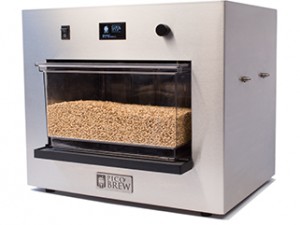
The PicoBrew Zymatic has a very limited range of brewing techniques and can only handle a small batch, which may make it unsatisfactory for hardcore all-grain brewers who value the ability to control every part of the brewing process (I lean a little bit that way myself).
For beginners in all-grain brewing, for experienced brewers who find themselves poor on time, and for testing trial brews in your commercial brewery, you absolutely cannot look past the Zymatic. The high cost is peanuts compared to the sheer number of hours you save on each brew!
Not Sure if it’s Right For You?
If you are still unsure, I have compared the top three automated brewing systems here.
CHEERS!
If you would like to buy a PicoBrew Zymatic and you live in the USA, click here to get one with free shipping and an included fermentation keg. If you live outside the USA, your best bet is via the PicoBrew page on Amazon (click here).
Read next:Common Mistakes When Keeping Beer Cold, How to Build the Perfect Homebrewing System from Scratch and Speidel Braumeister Brewing System Review




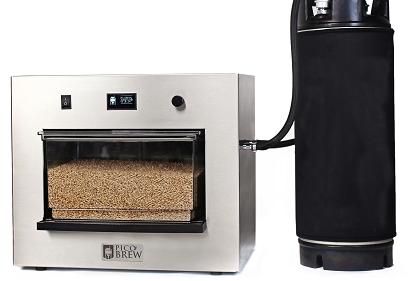
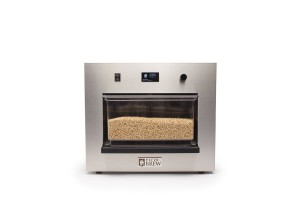

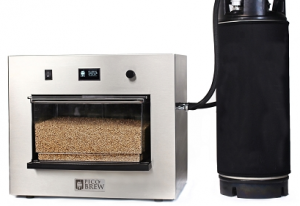
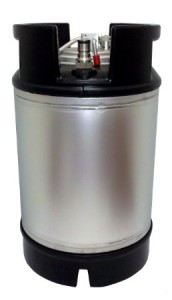
Hi Jesse,
It’s been a few years since I’ve done any home brewing and it seems I am years behind with all the progress. The PicoBrew Zymatic has several nice features, but what I find most interesting is using it for testing new brews. The fact that you need CO2 to bottle or put into a secondary keg is a shame. For me it would be too expensive, but I can see that for people with limited time it could be a great asset.
Hi Peter,
I know how you feel – it is a hefty investment. If you are looking at getting back into brewing and checking out all-in-one systems, I can strongly recmmend the Grainfather as the best available in a low price-point. It’s nowhere near as automatic as the Zymatic, but at $800 it is a lot easier than a manual DIY rig, and probably cheaper too.
Check it out here:Review: Grainfather Brewing System
Cheers!
-Jesse-
That’s a very informative and unbiased review you have there, but since I am a beginner here, I am very into this compact machine. I love my beers and I would also like to try making one.
It is not that expensive anyway, and saving more hours is one of my criteria for purchasing. I am only concerned with how long this machine will last? Do you have an idea? And the warranty as well?
Great question! I actually had to look this up – here is the official answer from PicoBrew:
“Yes, the Zymatic® is backed with a 1 year, limited warranty. With the right care and cleaning, the Zymatic® is designed for years of great service in the home. We guarantee you receive a working machine and will receive full customer support.”
I hope that helps – Cheers!
This is a perfect system for small scale brew. The setup is also simple. My question is, how long does it take to brew from grain? I am gonna purchase this for my kid who loves experimenting new products. This is a good product I must say. Its also durable.
It really is a great system!
Usually an all-grain brew will take me about 6 – 8 hours at home. Using the PicoBrew you can finish a brew in 4 hours!
Honestly this system is new to me and it is beyond cool! I love home fermenting…on a small scale, and have always wanted to make my own beers. I could see this being a lot of fun. I am sending this link to my brother in law, he likes to make his own honey wines and stuff. I want to learn more, where can I find out more about fermenting beers? Thanks for a potential new home appliance! Cheers 🙂
Hi Maria, thanks for reading! I’m glad you have found this interesting. I’m very curious – what have you been fermenting up to now?
If you want to learn more, please browse the rest of my site, especially How to Ferment Beer. You can also find some great info over at John Palmer’s page, howtobrew.com.
Cheers!
Wow, thanks for the review on the picobrew zymatic. I have been doing some research on getting back into brewing beer. I have been doing mead lately. Just seems much simpler at this point but it appears this could make life easy, but the price tag is a bit off putting.
Do you have any suggestions on something that might be at a lower price point?
Thanks again,
Marc
Hi Marc, great question. Yes, the Zymatic does make brewing a lot easier (and faster) but the price tag is a large barrier to entry.
I suggest the Grainfather Brewing System – it is slightly more manual, however the lower price tag is very attractive!
Wow, I didn’t even know such a thing existed. I always felt that people who brewed their beer from scratch had magical powers! This piece of equipment takes the “magic” out of brewing, I guess. You make some really good points in your review. It is quite expensive, and removing the human element seems like it could be a concern. This was a great, unbiased review. Thanks.
I know what you mean – there is less of the brewer’s own hands on touch when you use these machines. For the purists and the extreme hobbyists, the Cooler Mash Tun system adds a much more personal experience to the beer!
Thanks for the review!
Can you expand on what you mean by “severely limited range of brewing methods”?
Does it allow step mashing? Mash out? First wort hopping?
Hi Paul,
It can do everything you just asked. What I mean is that you are limited in your options such as decoction mashing, Parti-Gyle brewing, double mashes and so on. Basically, once the brew is underway, there is no way to get your wort out. It’s a step mash and a boils and that’s it.
Still very good for an easy brew day though!
Cheers,
Jesse
Got it. Thanks for the clarification! Been researching he machine and am getting close to the tipping point.
For anyone wanting to read about a Brewers experience with the Picobrew, check out this thread:
http://www.homebrewtalk.com/showthread.php?t=519452
Thanks for the link! It’s a really good read 🙂
I noticed your email address has “brewing” in it – are you a commercial brewer?
Could you rack this off to a carboy with air lock and ferment that way? why do you need the other keg with CO2?
thanks
Hi Curt,
This system is designed by PicoBrew for fermentation in a Cornelius Keg, I’m not sure why they chose this but my guess is to make the system as compact as possible. You can see in some of the previous comments that other readers have been considering modifications that transfer directly to a carboy instead of the keg.
If you wanted to keep the system in it’s original configuration, but rack to a carboy from the keg AFTER cooling / transfer is complete, you would have a small system loss, as the beer out tube on the PicoBrew fermenter has been shortened to allow for yeast sediment.
I hope this helps!
Cheers,
Jesse
ok, thanks. I get the keg part. but I have a carboy and fermentation tank and don’t really want it all in a corny keg. I have been brewing for decades , ya even before it was popular to brew 🙂 … So it just confused me a bit as to why not… and I did not want to plunk 2k down on an expensive toy that I could not play with. I sent the same question to their sales folk with no reply, that concerns me as well.
Thanks again
Curt
Totally understandable.
With just a little modification, you could have the heat exchanger transfer directly to a carboy. It would be easy enough, but I have no idea what that would do to your warranty – that is a question for the sales team.
If they don’t get back to you, I always have good responses from the team at Adventures In Homebrewing! Click this link to find them: Homebrewing.org
Cheers,
Jesse
This can actually be modified to hook up to an immersion, counterflow, or plate chiller to go into a carboy or the supplied keg. It also allows for more than 4 hop additions, you just have to pause the brew and add more hops to the cages.
Good input, thank you very much Jason!